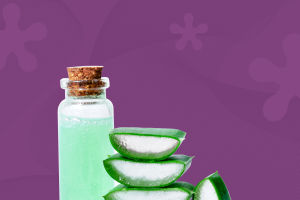In the tropical and subtropical oceans, there are many spectacular "cities", coral reef cities, they are paradise for marine life, many marine life and plants like to live in it, because corals provide both hiding and sufficient food.
Corals are dendritic in shape, bright and beautiful in color, red, white, orange, black, etc. They generally live on the bottom of the sea. They live on the bottom of the sea and absorb nutrients from seawater when they grow. Often clings to rocks, platforms, slopes and crevices. Corals look like plants but are actually animals.
Corals are the oldest marine life on Earth, appearing nearly half a billion years ago. It is formed by the aggregation of countless tiny polyps. Coral is a kind of coelenterate, it is very small, often only a few millimeters, exquisite body, beautiful color, very squeamish.
Corals can only live in waters where the water temperature is maintained at 22-28 degrees Celsius throughout the year, and the water quality must be clean and transparent. The corals cannot be exposed to the water surface for a long time when the sun is full and the tide is low. Only when these harsh conditions are met, the corals can flourish and build coral reefs.
Coral is a skeleton formed by the accumulation of calcium as the main body secreted by coral polyps, and this skeleton is often produced in a dendritic shape. Excessive collection of coral will seriously damage the marine ecology, so coral is listed as a second-class protected organism internationally.
Corals are ancient marine biomes, their traces can even be traced back half a billion years ago. Corals grow extremely slowly, taking decades or even centuries to grow a centimeter. Taking red coral as an example, it often takes hundreds or even thousands of years for a mature red coral strain to form.
Corals originally lived on the calcareous highlands on the seafloor, eating food such as algae, and secreting calcareous after digestion. When the old polyps died, their skeletons were mixed with the limestone, and new polyps continued to grow on the original limestone.
In this way, thousands of years have passed, and huge coral reefs have been formed. Some emerge from the water and become islands.
The ocean is an extremely mysterious and desirable place. In addition to all kinds of swimming creatures, there are also large coral reefs, which are dazzling and bred countless marine life. In recent years, it has entered a state of albino and is on the verge of extinction.
Because corals are on the verge of extinction, "Living Coral" was rated as the representative color of 2019 by PANTONE, the world's most famous color expert, with color number 16-1546. In this way, they express their concern about global climate change and its environmental impact.
Coral reefs, known as "undersea rainforests", are now facing extinction. Coral bleaching is the phenomenon of coral turning white. Its own beautiful color comes from the symbiotic algae in the body, and the corals depend on the micro symbiotic algae in the body to survive, and the algae provide energy to the coral through photosynthesis.
If the symbiotic algae leaves or dies, the coral turns white and eventually dies from a loss of nutrient supply. Corals are also more vulnerable to bleaching as rising ocean temperatures reduce the algae they depend on.
The symbiosis between symbiotic algae and corals is a relationship of coexistence and co-prosperity. When corals are stressed by drastic changes in their environment, this delicate symbiotic relationship can be disrupted, and the corals lose their symbiotic algae or photosynthetic pigments and turn white, also known as "bleaching."


